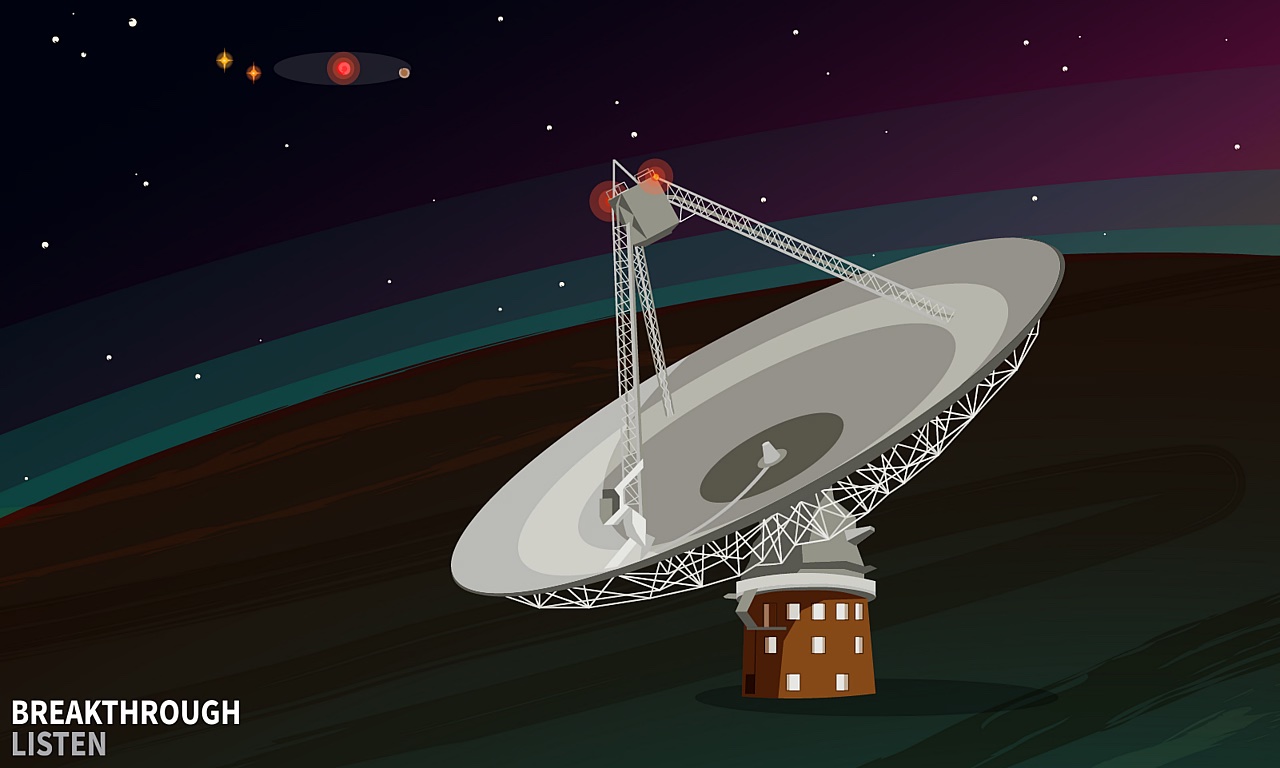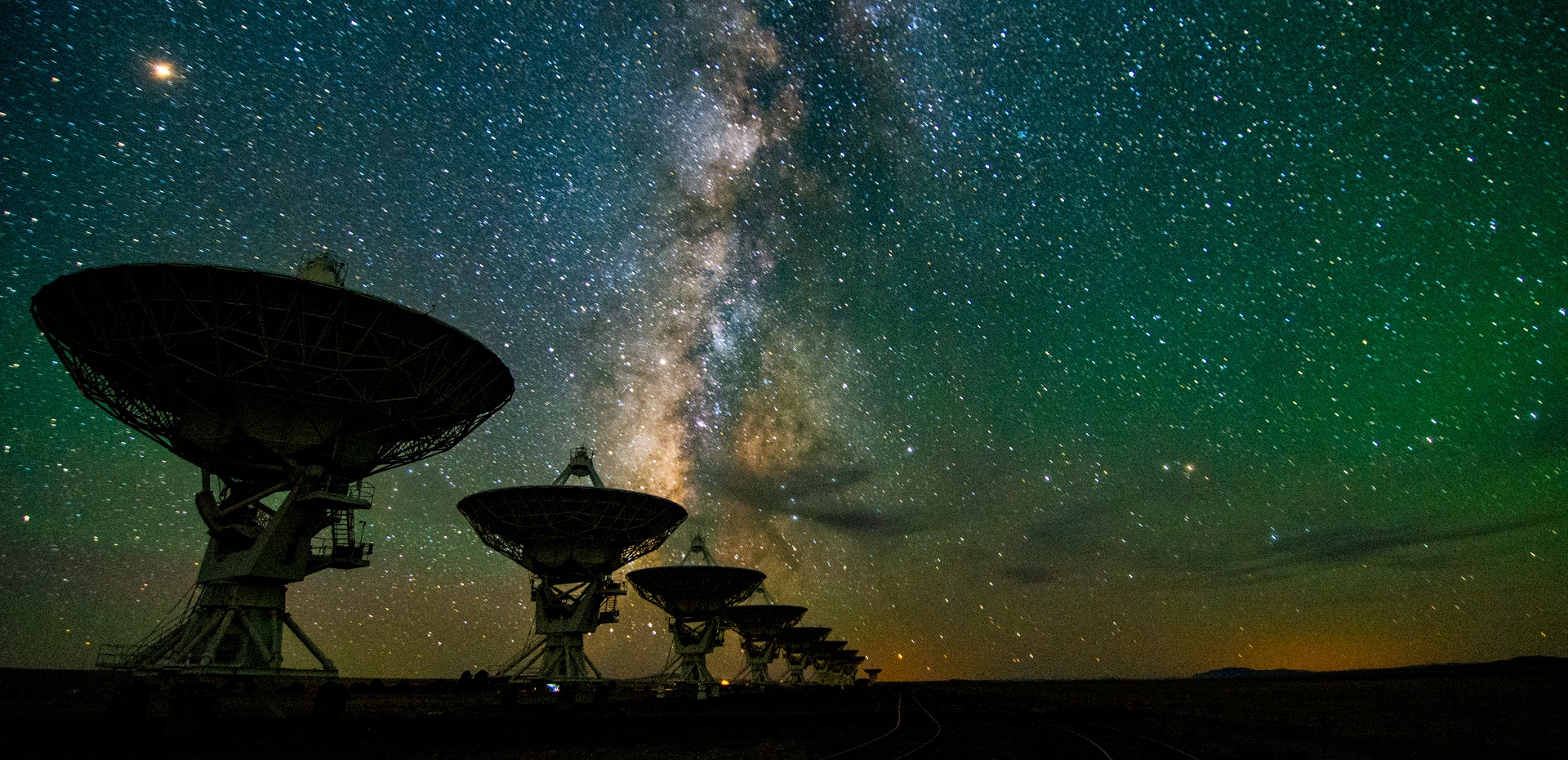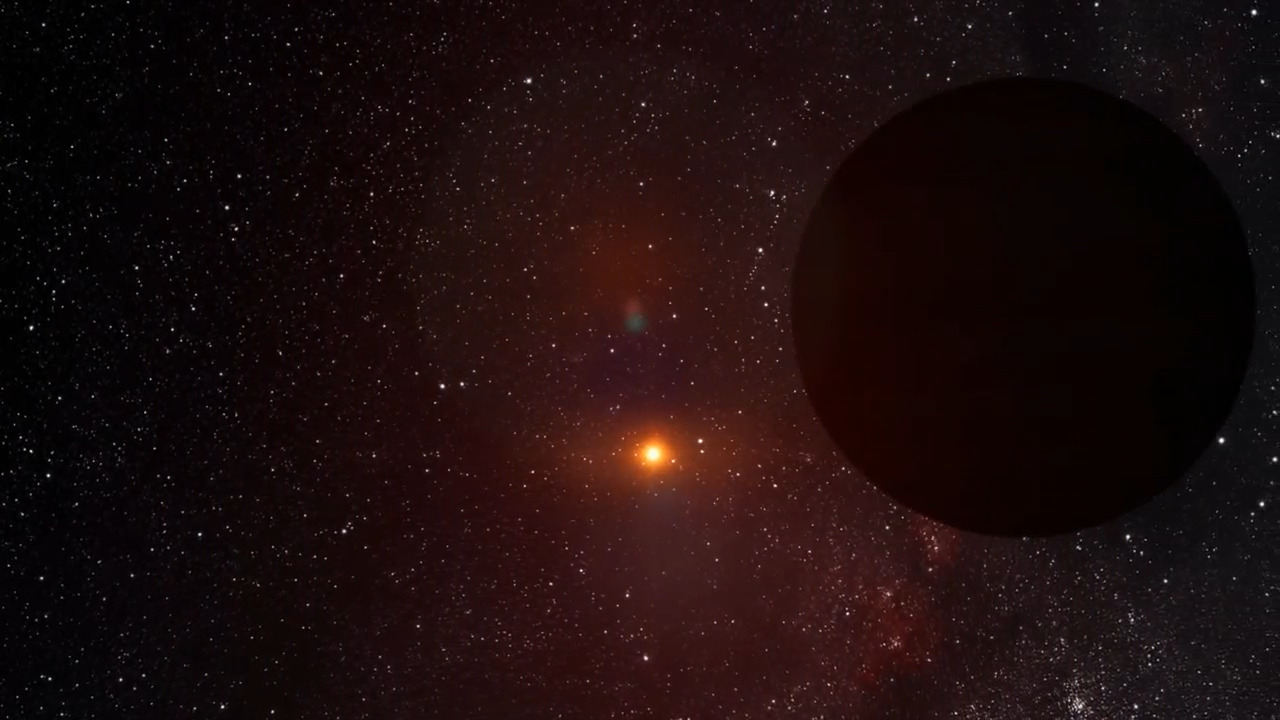Yesterday I presented a rather pessimistic view about our chances of finding evidence of alien civilizations. That work focused on detecting physical structures on an alien planet, which would take an optical telescope array the size of Saturn’s orbit. Today I’ll talk about a more optimistic view, one which focuses not on physical structures, but the fingerprint of molecules in an alien atmosphere. It’s a task that is not only much easier, it’s something we could do now using the James Webb Space Telescope (JWST).
Continue reading “If Earth Was an Exoplanet, JWST Would Know There's an Intelligent Civilization Here”Do Advanced Civilizations Know We're Here?
Adrift in a great sea of stars, we must surely not be alone.
It’s hard not to look at the night sky and think about the possibility of other civilizations out there. From the philosophical speculations of Giordano Bruno to the statistical estimations of Frank Drake, the more we’ve learned about the universe, the more likely alien life seems to be. And yet, in our search for this life, we have heard nothing but silence.
Continue reading “Do Advanced Civilizations Know We're Here?”Want to Find UFOs? That's a Job for Machine Learning
In 2017, humanity got its first glimpse of an interstellar object (ISO), known as 1I/’Oumuamua, which buzzed our planet on its way out of the Solar System. Speculation abound as to what this object could be because, based on the limited data collected, it was clear that it was like nothing astronomers had ever seen. A controversial suggestion was that it might have been an extraterrestrial probe (or a piece of a derelict spacecraft) passing through our system. Public fascination with the possibility of “alien visitors” was also bolstered in 2021 with the release of the UFO Report by the ODNI.
This move effectively made the study of Unidentified Aerial Phenomena (UAP) a scientific pursuit rather than a clandestine affair overseen by government agencies. With one eye on the skies and the other on orbital objects, scientists are proposing how recent advances in computing, AI, and instrumentation can be used to assist in the detection of possible “visitors.” This includes a recent study by a team from the University of Strathclyde that proposes how hyperspectral imaging paired with machine learning could lead to an advanced data pipeline for characterizing UAP.
Continue reading “Want to Find UFOs? That's a Job for Machine Learning”The 2nd Annual Penn State SETI Symposium and the Search for Technosignatures!

From June 18th to 22nd, the Penn State Extraterrestrial Intelligence Center (PSETI) held the second annual Penn State SETI Symposium. The event saw experts from many fields and backgrounds gathering to discuss the enduring questions about SETI, the technical challenges of looking for technosignatures, its ethical and moral dimensions, and what some of the latest experiments have revealed. Some very interesting presentations examined what will be possible in the near future and the likelihood that we will find evidence of extraterrestrial intelligence.
Among them, there were some very interesting presentations by Adam Frank, Professor of Astrophysics at the University of Rochester; Ph.D. student Matias Suazo, an astrophysicist and member of Project Haephestos at the University of Uppsala; and Nicholas Siegler, the Chief Technologist of NASA’s Exoplanet Exploration Program (ExEP). These presentations addressed ongoing issues in the search for extraterrestrial intelligence (ETI), technosignatures, the role of oxygen in the evolution of complex life, and what motivations extraterrestrial civilizations (ETC) might have for creating noticeable signatures.
Continue reading “The 2nd Annual Penn State SETI Symposium and the Search for Technosignatures!”What Does 60 Years of Silence Tell Us About the Search for Extraterrestrials?
Aliens are big in the news recently, fueled by congressional hearings about Unidentified Anomalous Phenomena (UAPs), formally known as UFOs. But while the idea of aliens visiting Earth may be exciting, the better bet is still the idea that aliens might exist on distant worlds. We already know potentially habitable planets are common and intelligent life has arisen on at least one world, so why not many? But after 60 years of searching for evidence of extraterrestrials “out there,” we’ve found nothing. So what does that tell us?
Continue reading “What Does 60 Years of Silence Tell Us About the Search for Extraterrestrials?”Did That Message Come From Earth or Space? Now SETI Researchers can be Sure

In radio astronomy, there are lots of natural radio signals to observe. The glow of hydrogen gas, the swirl of electrons along a magnetic field, or the pop-pop-pop of pulsars. These signals usually have a very natural character to them, so astronomers can distinguish them from the artificial chirps and chatters of terrestrial sources. But when you’re looking for the signals of alien civilizations, things can get more tricky. They should have an artificial character similar to the radio signals of humans. So how can astronomers distinguish between the distant artificial signal and the local ones?
Continue reading “Did That Message Come From Earth or Space? Now SETI Researchers can be Sure”Astronomers Scan the Skies for Nanosecond Pulses of Light From Interstellar Civilizations

In 2015, Russian-Israeli billionaire Yuri Milner and his non-profit organization, Breakthrough Initiatives, launched the largest Search for Extraterrestrial Intelligence (SETI) project. Known as Breakthrough Listen, this SETI effort relies on the most powerful radio telescopes in the world and advanced analytics to search for potential evidence of technological activity (aka. “technosignatures”). The ten-year project will survey the one million stars closest to Earth, the center of our galaxy, the entire galactic plane, and the 100 galaxies closest to the Milky Way.
In 2018, they partnered with the Very Energetic Radiation Imaging Telescope Array System (VERITAS) Collaboration, a ground-based system of gamma-ray telescopes operating at the Fred Lawrence Whipple Observatory (FLWO) atop Mt. Hopkins in southern Arizona. In a recent paper, the VERITAS Collaboration shared the results of the first year of their search for “optical technosignatures” (from 2019 to 2020). Their results are a vital proof of concept demonstrating how future searches for extraterrestrial civilizations can incorporate optical pulses into their technosignature catalog.
Continue reading “Astronomers Scan the Skies for Nanosecond Pulses of Light From Interstellar Civilizations”Astronomers are Searching for a Galaxy-Wide Transmitter Beacon at the Center of the Milky Way

It has been over sixty years since the first Search for Extraterrestrial Intelligence (SETI) survey occurred. This was Project Ozma, a survey led by Dr. Frank Drake (who devised the Drake Equation) that used the National Radio Astronomy Observatory (NRAO) in Green Bank, West Virginia, to listen for radio transmissions from Epsilon Eridani and Tau Ceti. While the search revealed nothing of interest, it paved the way for decades of research, theory, and attempts to find evidence of technological activity (aka. “technosignatures”).
The search continues today, with researchers using next-generation instruments and analytical methods to find the “needle in the cosmic haystack.” This is the purpose behind Breakthrough Listen Investigation for Periodic Spectral Signals (BLIPSS), a collaborative SETI project led by Cornell graduate student Akshay Suresh to look for technosignatures at the center of the Milky Way. In a recent paper, Suresh and his team shared their initial findings, which were made possible thanks to data obtained by the Greenbank Observatory and a proprietary algorithm they developed.
Continue reading “Astronomers are Searching for a Galaxy-Wide Transmitter Beacon at the Center of the Milky Way”





